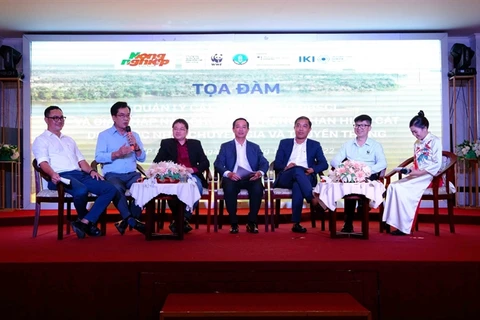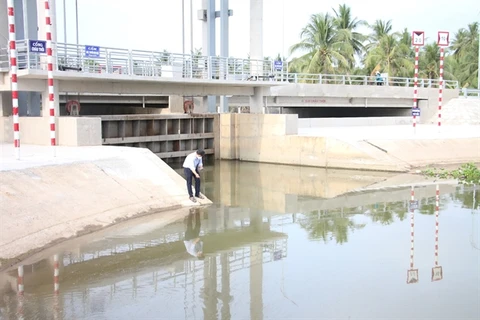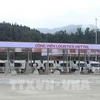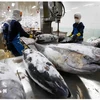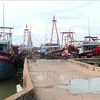Hanoi (VNA) - Farmers in the Mekong Delta contribute over 50% of the country's rice production and 90% of rice exports. However, quality, efficiency, product competitiveness and income of rice farmers in the region remain low.
To increase the rice value chain, adapt to climate change and protect the environment, the Ministry of Agriculture and Rural Development is developing a project on sustainable production of 1 million hectares specialising in high-quality rice cultivation in the Mekong Delta. The project is expected to shift rice farming to become a leading sector in agricultural production with a multi-valued approach.
This is also a programme to implement Resolution No. 13-NQ/TW dated April 2, 2022 of the Politburo on the direction of socio-economic development and assurance of national defence and security in the Mekong Delta to 2030, with a vision to 2045. It will contribute to the implementation of Vietnam's commitment at COP26, and demonstrate production growth and protect the environment.
Dang Kim Son, former Director of the Institute of Policy and Strategy for Agriculture and Rural Development, said with the goal to develop a project of this kind, rice production must be on a large scale to apply harmonious mechanisation and automation.
Vo Tong Xuan, Honorary Rector of Southern Can Tho University, said that Vietnam already has good rice varieties and it is important to pay attention to how to organise production to bring efficiency and ensure sustainable development.
He added that, to make the project work well, it is necessary to have mechanisms and policies in place, as that is how to help find markets and diversify products, thus improving the value of Vietnamese rice.
Deputy Minister of Agriculture and Rural Development Tran Thanh Nam said that not only high-quality rice varieties, the region must ensure sustainable production processes, protect the ecological environment, and reduce greenhouse gas emissions.
Besides, the Ministry of Agriculture and Rural Development will work with localities in the Mekong Delta, industry associations, rice production and trading enterprises, and cooperatives to determine specific deployment production areas for rice production. This will encourage businesses, cooperatives and local authorities in the Mekong Delta to participate in the project implementation./.

